How to Do CPR: 7 Essential Steps of CPR Everyone Should Know
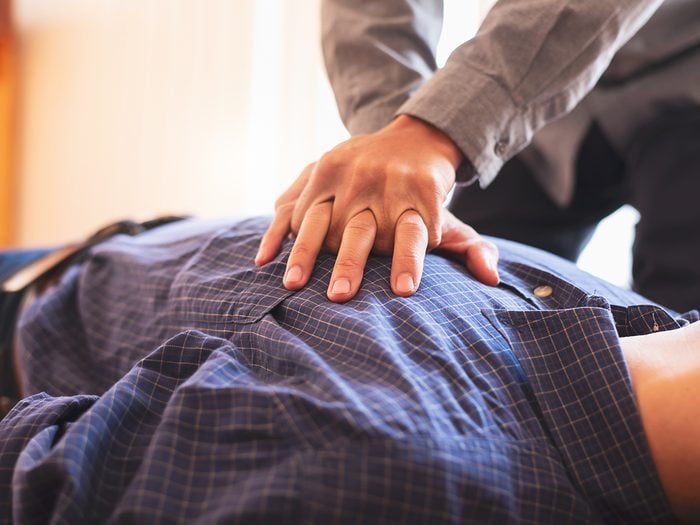
Doing CPR right away can double or even triple a person’s chance of surviving cardiac arrest.
If a person is not breathing, his heartbeat will stop. Do CPR (chest compressions and rescue breaths) to help circulation and get oxygen into the body. (Early use of an AED—an automated external defibrillator—if one is available, can restart a heart with an abnormal rhythm.
First, open a person’s airway to check if they are breathing (don’t begin CPR if a patient is breathing normally). Then, get help. If you are not alone, send someone to call for help as soon as you have checked breathing. Ask the person to come back and confirm that the call has been made.
CPR 101: These Are the CPR Steps Everyone Should Know
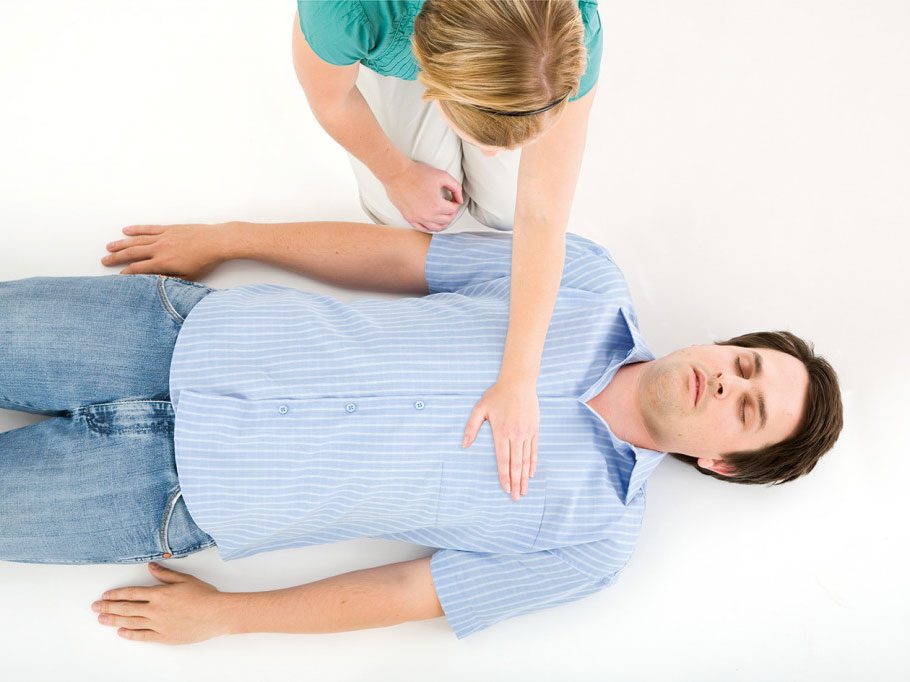
1. Position your hand (above). Make sure the patient is lying on his back on a firm surface. Kneel beside him and place the heel of your hand on the centre of the chest.
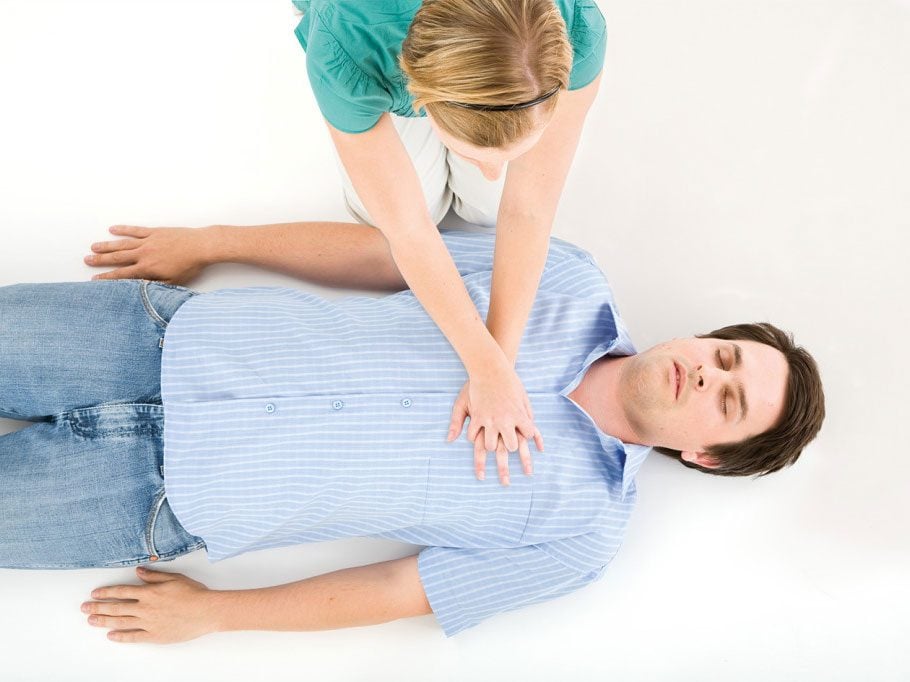
2. Interlock fingers (above). Keeping your arms straight, cover the first hand with the heel of your other hand and interlock the fingers of both hands together. Keep your fingers raised so they do not touch the patient’s chest or rib cage. (Check out these emergency first-aid kit essentials.)
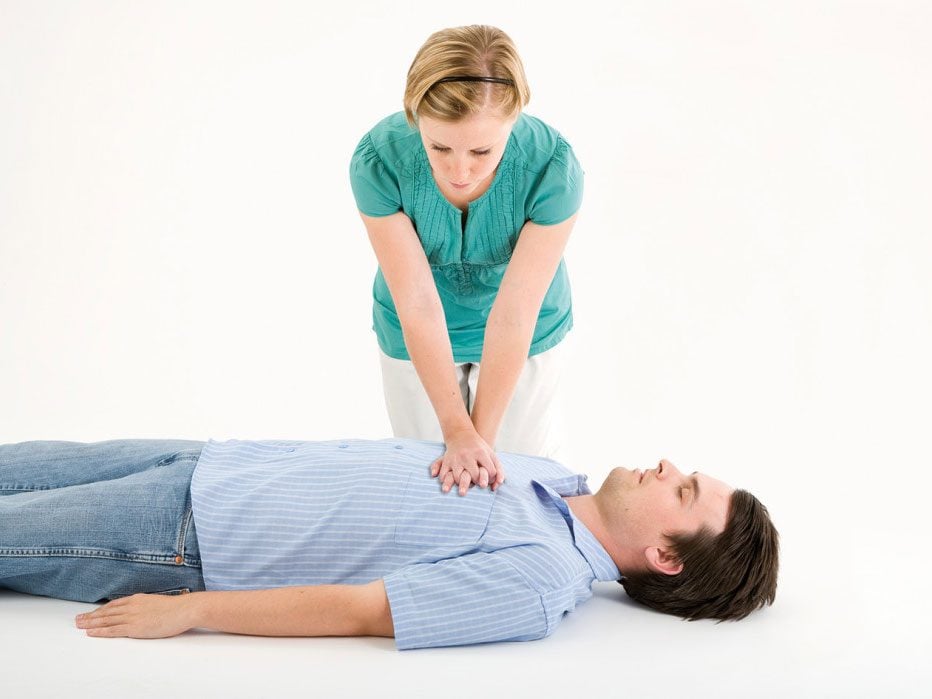
3. Give chest compressions (above). Lean forward so that your shoulders are directly over the patient’s chest and press down on the chest about two inches. Release the pressure, but not your hands, and let the chest come back up.
Repeat to give 30 compressions at a rate of 100 compressions per minute. Not sure what that really means? Push to beat of the Bee Gees song “Stayin’ Alive.” (Learn how to recognize the silent signs of a stroke.)
Note: The American Heart Association recommends Hands-Only CPR (CPR without rescue breaths, which are detailed below) for people suffering out-of-hospital cardiac arrest. According to the AHA, only about 39 per cent of people who experience an out-of-hospital cardiac arrest get immediate help before professional help arrives; doing Hands-Only CPR may be more comfortable than doing rescue breaths for some bystanders and make it more likely that they take action. The AHA still recommends CPR with compressions and breaths for infants and children and victims of drowning, drug overdose, or people who collapse due to breathing problems.
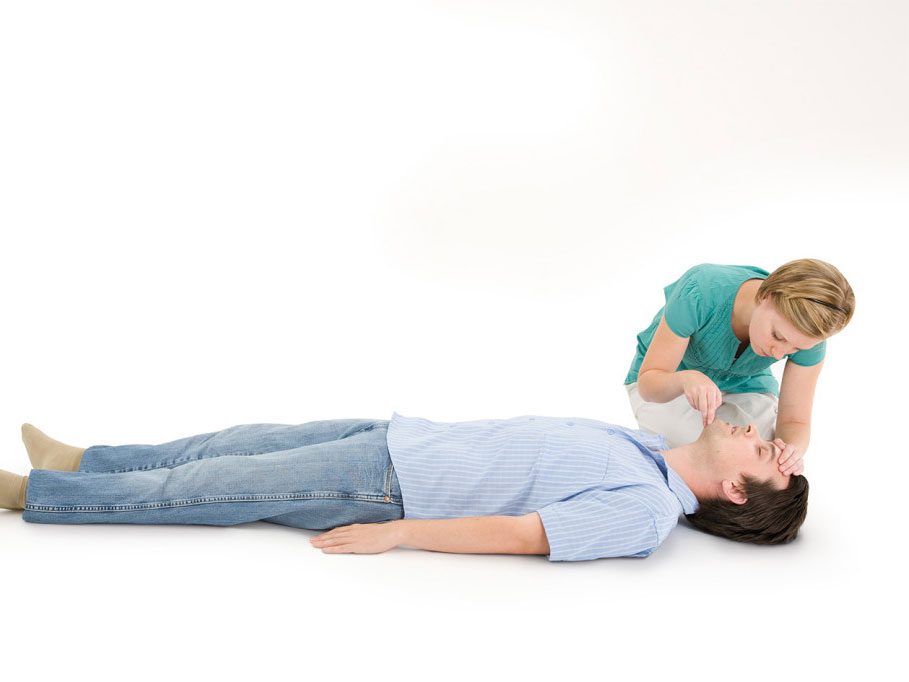
4. Open the airway (above). Move to the patient’s head. Tilt his head and lift his chin to open the airway again. Let his mouth fall open slightly.
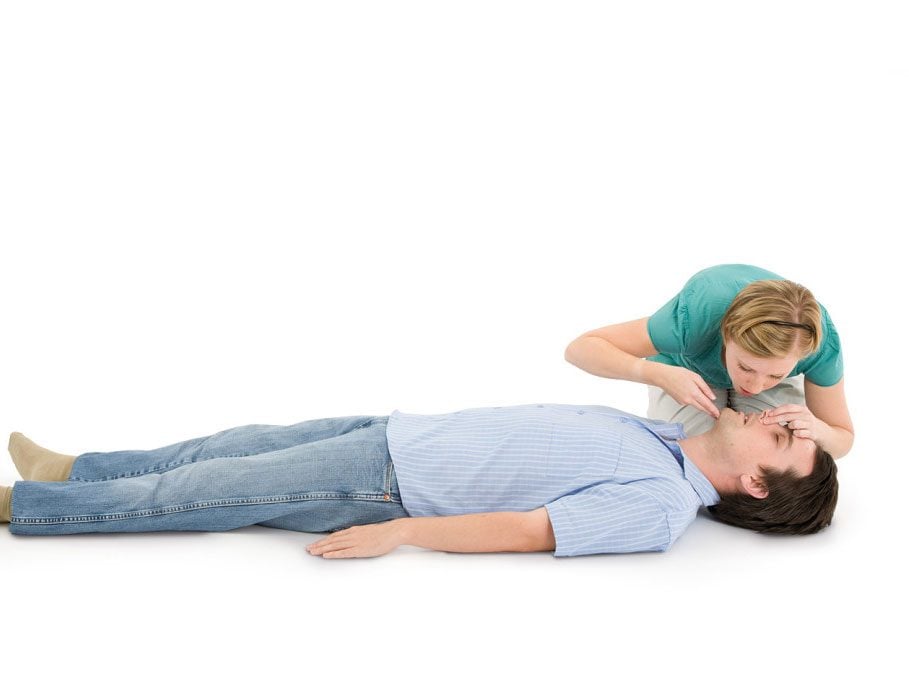
5. Give rescue breaths (above). Pinch the nostrils closed with the hand that was on the forehead and support the patient’s chin with your other hand. Take a normal breath, put your mouth over the patient’s, and blow until you can see his chest rise.
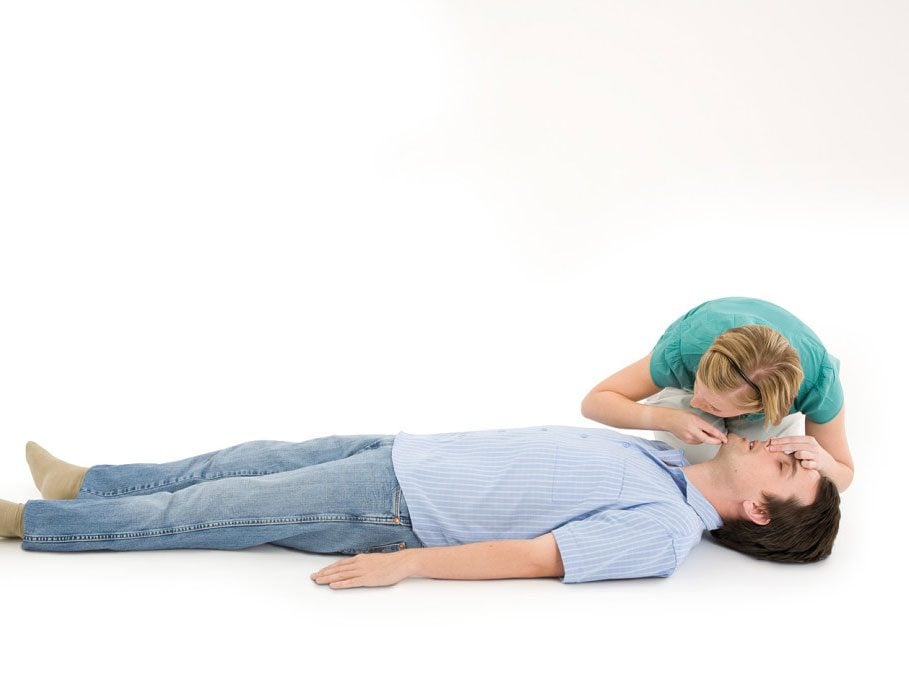
6. Watch chest fall. Remove your mouth from the patient’s and look along the chest, watching the chest fall. Repeat steps five and six once.
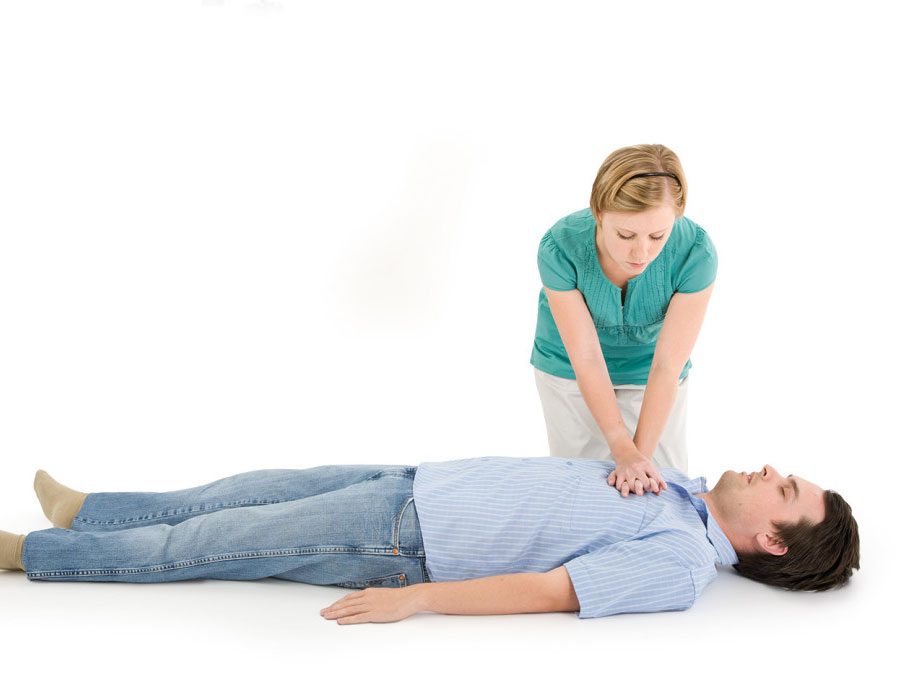
7. Repeat chest compressions and rescue breaths. Place your hands on the chest again and repeat the cycle of 30 chest compressions, followed by two rescue breaths. Continue the cycle.
Next, learn how to recognize the silent signs of a heart attack.






